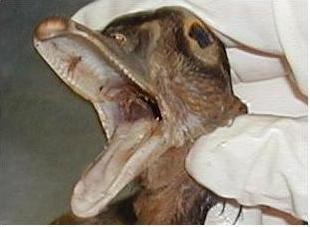
 |
The wood duck is representative of
most members of the Class Aves. They have a unique digestive system
adapted to their diet that consists mostly of seeds, acorns, berries, and
grains. The wood duck has a beak with serrated edges that help with
the breaking down of food. Their mouth
consists of a tongue that moves food through the oral cavity into the pharynx
and forms a bolus. The pharynx is a passage way for air and food
to the esophagus. The esophagus in birds is specialized with a keratin
layer that protects it from seeds and grains. The widened portion
of the esophagus found only in grainiverous birds is the crop. The
crop is a temporary storage for food where mechanical breakdown
occurs before food is either regurgitated or moved down the esophagus.
The proventriculus is a thin walled glandular
section of stomach that secretes digestive enzymes(Kardong, 2002).
The ventriculus (gizzard) is a thick
muscled structure that contains hard grit and pebbles that mechanically
breaks down large food. Now, food passes to the small
intestine where chemical breakdown of food occurs and the nutrients
are absorbed. There are specialized organs that lead into the small
intestine and help break down food products. The liver
is a large organ that secretes bile to the small intestine and emulsifies
fats. The pancreas is a second specialized
organ that secretes digestive enzymes. Before entering the large
intestine food moves into the ceca which
digest plant cellulose using the enzyme cellulase. Now that the nutrients
in the food have been absorbed, the undigested food products pass into
the large intestine where water is reabsorbed
and compacted waste passes. The undigested waste, along with urine,
is excreted through the cloacal opening.